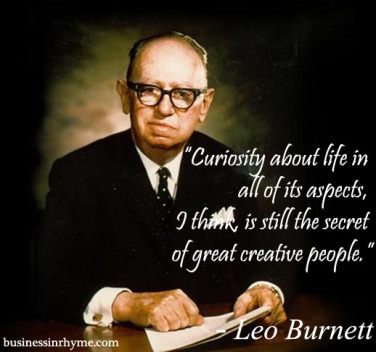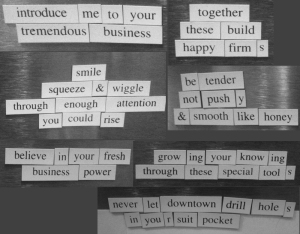During my research I came a cross interesting study from 2014. It was delivered by independent Forrester Consulting group and focuses on the impact that creativity can have on business results. Now, when we think of business performance and innovation first things that come into our mind are productivity and technology, but what about the most important part of human resources – creativity? Well, this study tries to answer some of these questions.
During the study, many senior managers that come from corporations across a diverse set of industries were surveyed and interviewed to give their quantitative and qualitative overview of how creativity impacts business results (you can read the report here).
In general, the study confirms what I always truly believed: creativity is a resource and skill that can be nurtured in organizations with aim to recharge business performance in terms of key business indicators, like innovation rate, revenue growth, market share and talent acquisition.
Key findings in this study also include that:
- Despite the perceived benefits of creativity, 61% of companies do not see their companies as creative.
- More companies that foster creativity achieve exceptional revenue growth comparing to their peers.
- More creative companies enjoy greater market share and competitive leadership.
- More creative companies win recognition as a best place to work.
- Companies put creativity on the business agenda.
- Creativity thrives with leadership support.
What also we can learn from these conclusions is:
- In any kind of work and entrepreneurship creativity is becoming a vital currency for us to monetize our competitive advantage.
- Creativity can help us moves forward on the leadership ladder in our industry.
- Business that encourages creativity is a healthier working place.
- Business that encourages creativity is more attractive both to customers and potential coworkers.
How creativity is treated in your work place? Please share in the comments bellow. And as an inspiration for your creativity at work I’ve included a poem to keep you motivated and on track:
Team Work by Edgar A. Guest
It’s all very well to have courage and skill
And it’s fine to be counted a star,
But the single deed with its touch of thrill
Doesn’t tell the man you are;
For there’s no lone hand in the game we play,
We must work to a bigger scheme,
And the thing that counts in the world to-day
Is, How do you pull with the team?
They may sound your praise and call you great,
They may single you out for fame,
But you must work with your running mate
Or you’ll never win the game;
Oh, never the work of life is done
By the man with a selfish dream,
For the battle is lost or the battle is won
By the spirit of the team.
You may think it fine to be praised for skill,
But a greater thing to do
Is to set your mind and set your will
On the goal that’s just in view;
It’s helping your fellowman to score
When his chances hopeless seem;
Its forgetting self till the game is o’re
And fighting for the team.









